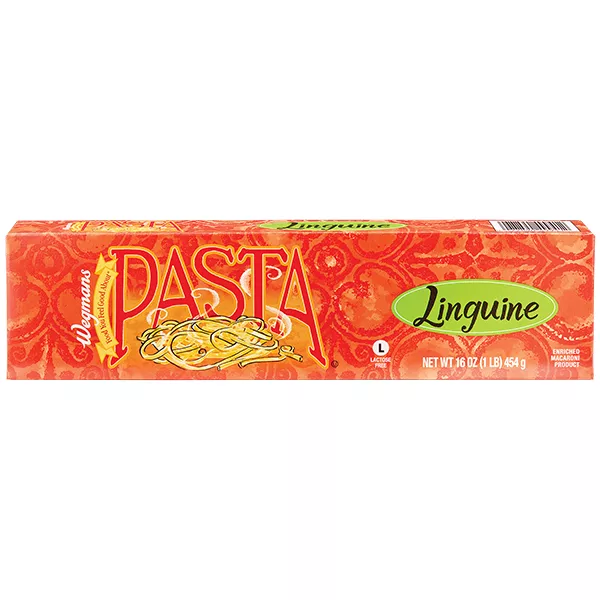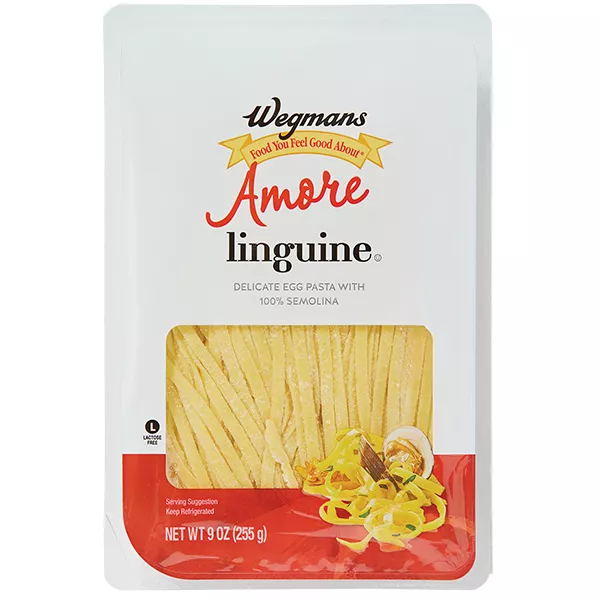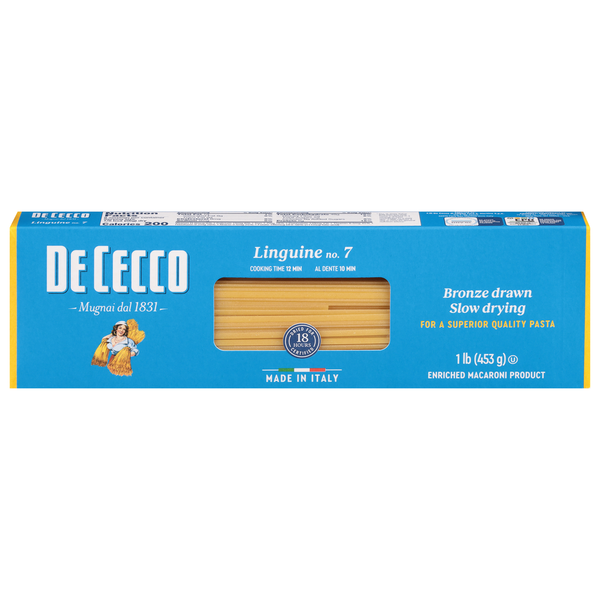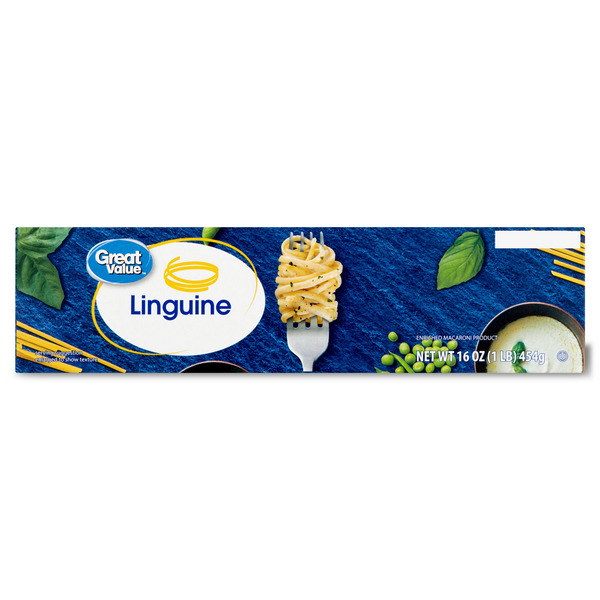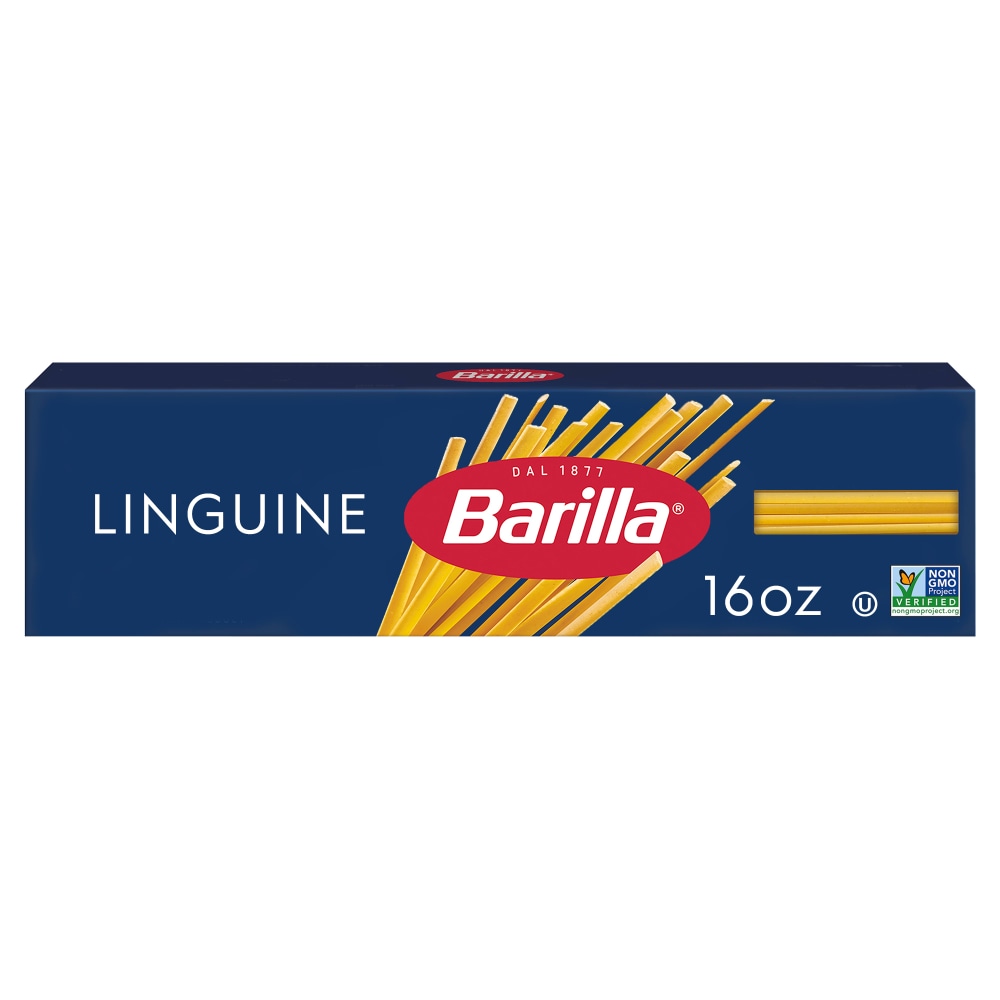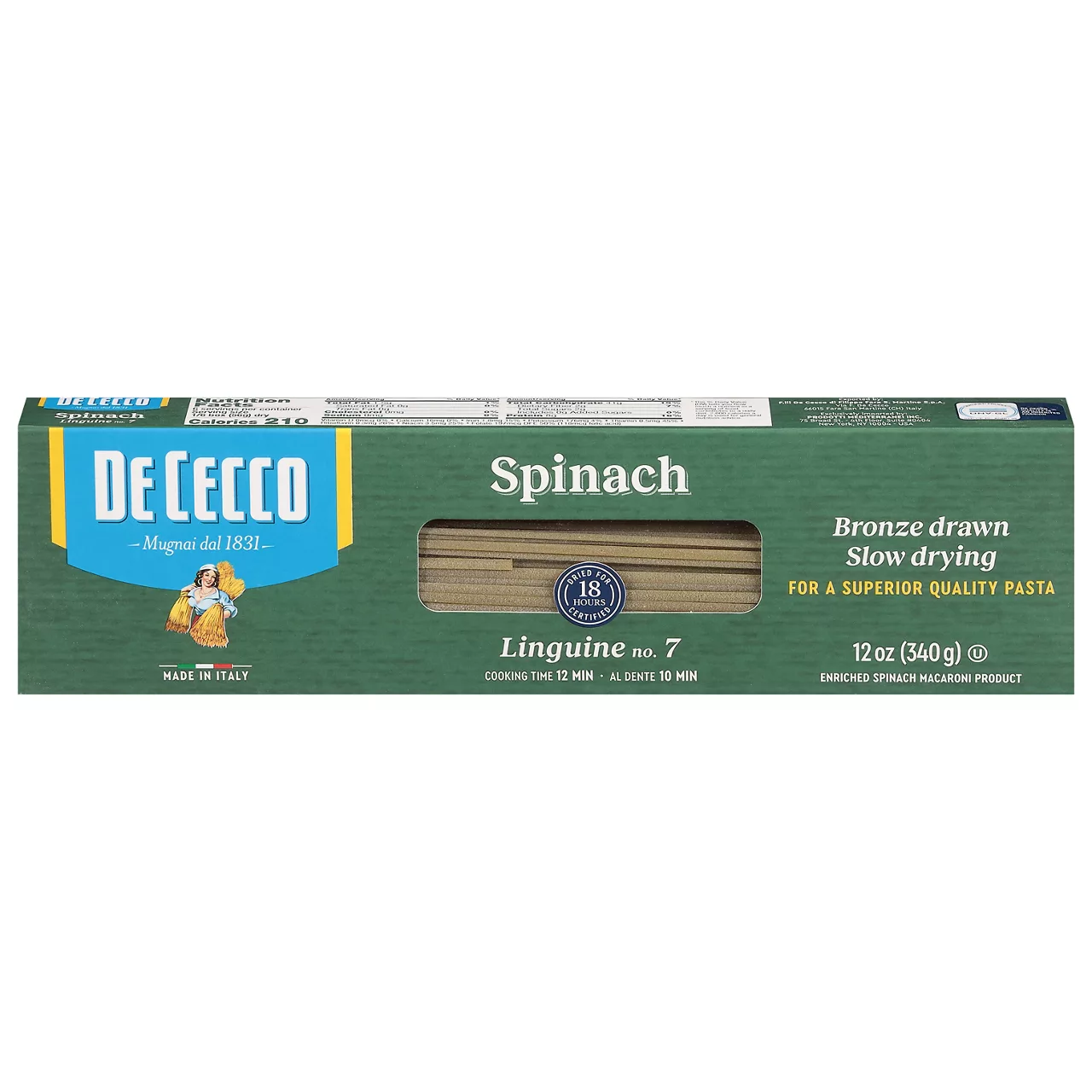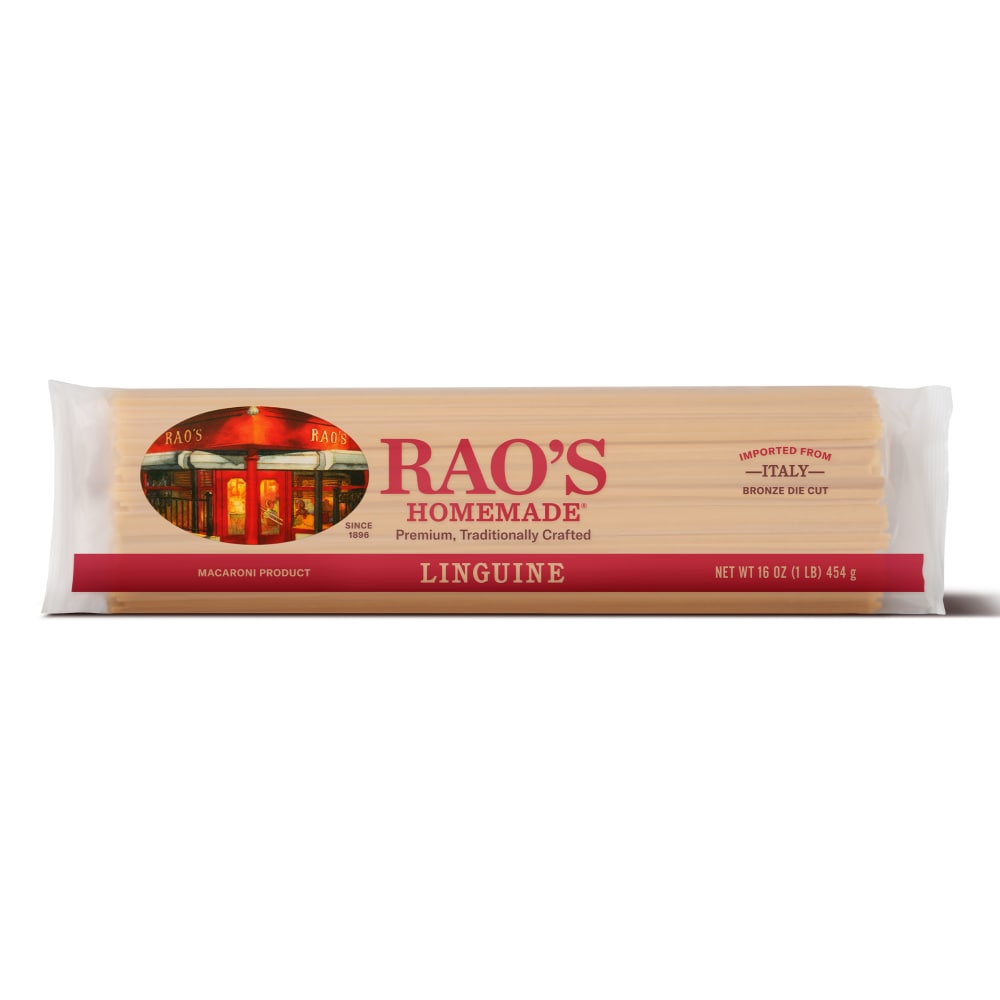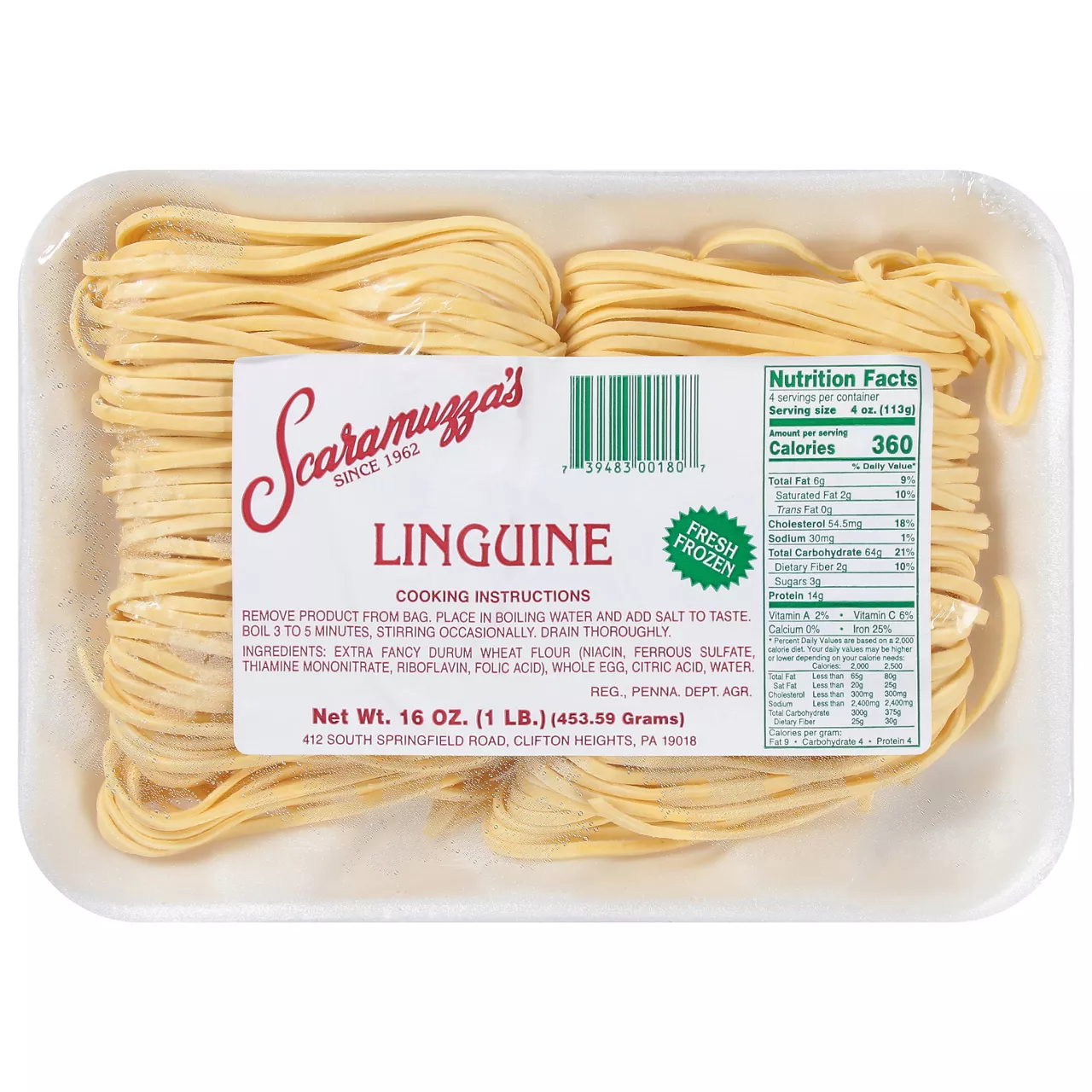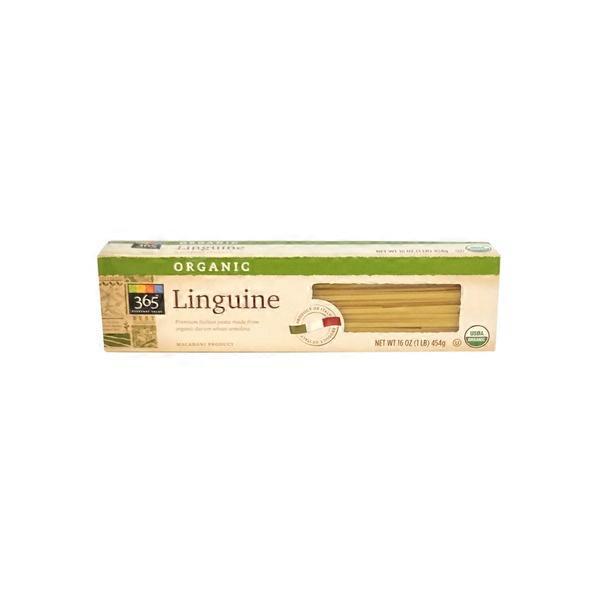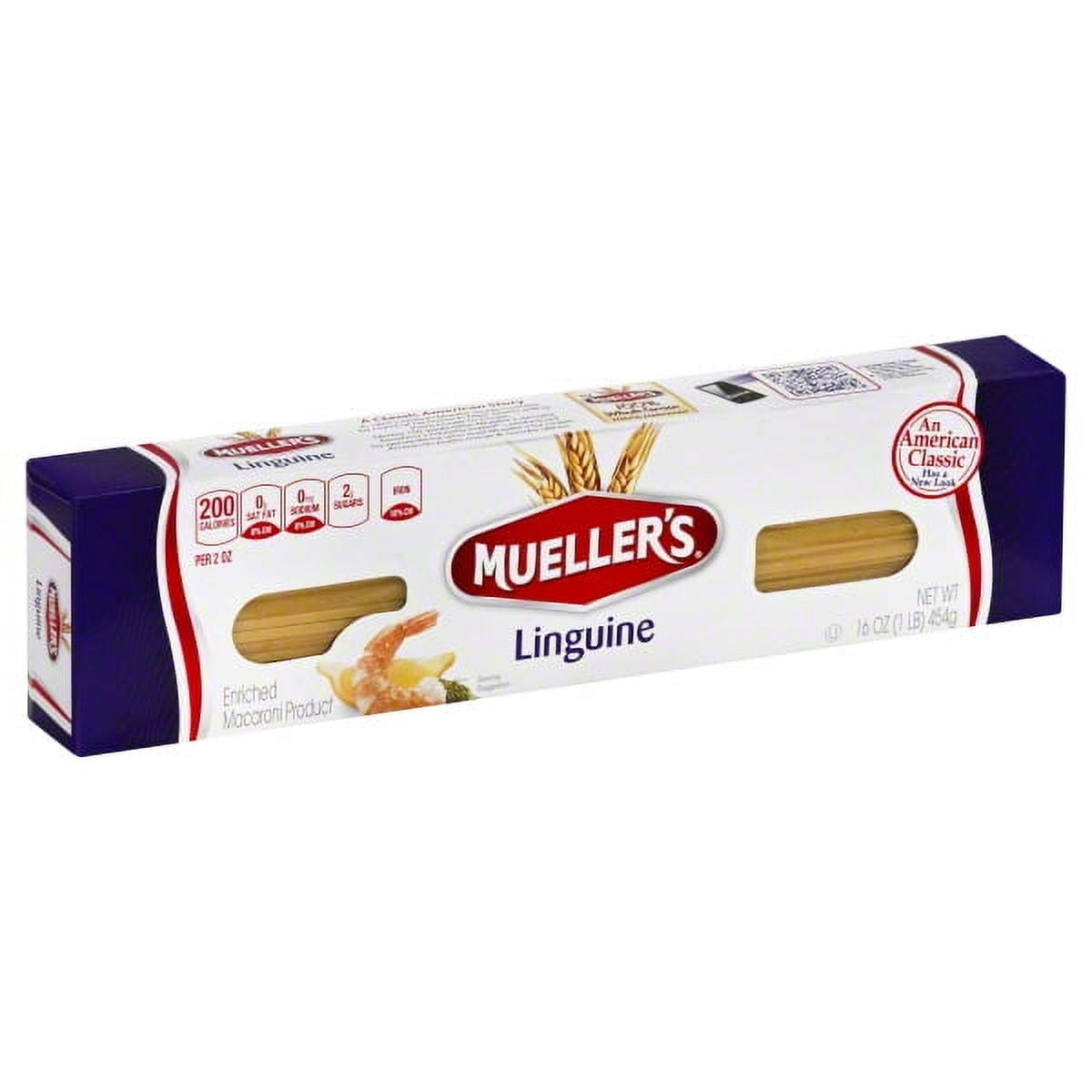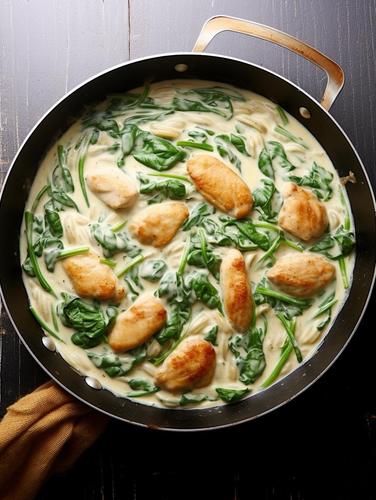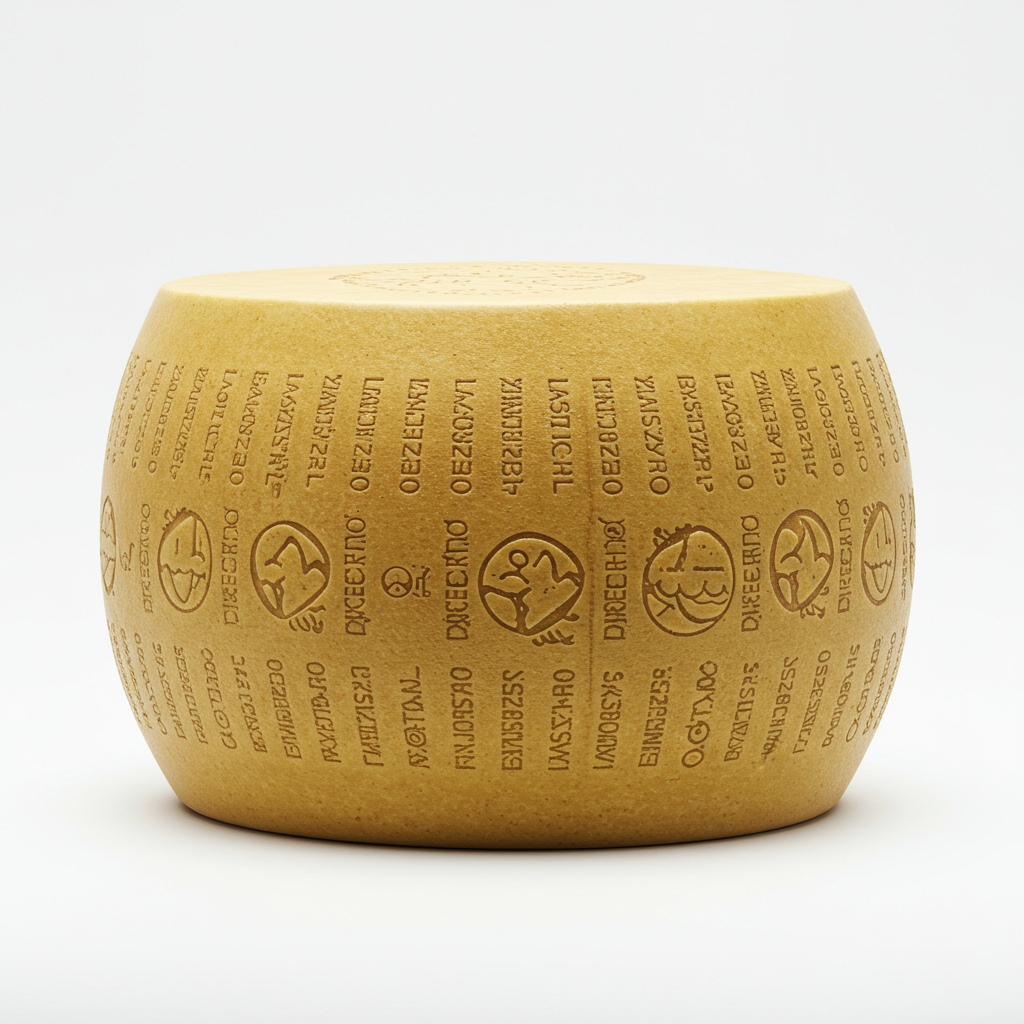MAIN DISHES
SIDE DISHES
Linguine
Linguine is a type of pasta originating from Italy, specifically the Liguria region. It is characterized by its long, narrow, and slightly flattened shape resembling flattened spaghetti. The word "linguine" itself is derived from the Italian term "linguina," which translates to "little tongues." This pasta is typically made with durum wheat semolina flour and is best known for its versatility in complementing various sauces, seafood, and vegetable dishes.
Popularly enjoyed by home cooks and professional chefs alike, linguine is often paired with rich and robust sauces, such as pesto, clam sauce, or tomato-based sauces. Its unique texture allows for better adherence to sauces, making it a favorite choice in pasta dishes. Linguine provides a satisfying and flavorful base for any Italian-inspired meal, from the traditional to the experimental.
84%
CARBS
2%
FAT
14%
PROTEIN
784 Linguine Products
Wegmans Linguine Pasta
Wegmans Italian Classics Linguine Pasta
De Cecco Linguine No. 7
Great Value Linguine
Barilla Linguine Pasta
De Cecco, Enriched Spinach Macaroni Product, Linguine
Rao's Homemade Linguine
Scaramuzza's LINGUINE
365 by Whole Foods Market, Pasta Linguine Organic, 16 Ounce
Mueller's Linguine
Used In 95 Recipes
6
Toasty Butter Linguine with Creamy White Beans & Baby Spinach
7
Garlic-Infused Brown Butter & Parmesan Noodles
2
Creamy Lemon-Avocado Linguine
2
Creamy Chicken Bacon Ranch Linguine
1
Garlic Lovers' Dream Pasta
2
Savory Sausage and Tomato Linguine
4
Lemon-Rosemary Chicken Linguine
4
One-Pot Creamy Garlic Chicken Linguine
Linguine Is Frequently Used With
Linguine FAQ
Cooking with linguine can be an easy task if done right. One of the most common mistakes people make when cooking linguine is overcooking it. Overcooked linguine becomes too soft and can lose its form, compromising its ability to hold sauce. The pasta should be cooked until it's 'al dente' - firm to the bite. To achieve this, it's best to follow the suggested cooking time on the package. Another error is not adding salt to the boiling water. Salt enhances the flavor of the pasta, making it tastier.
To get the most out of linguine, pair it with the right type of sauce. Due to its slightly flat shape, linguine goes great with slightly thicker and chunkier sauces like tomato or bolognese. It also combines well with seafood and pesto, often used in traditional Italian dishes.
Another helpful tip and not widely known fact about linguine is that it should be added to the sauce, not the other way round. After rushing the pasta under cold water to stop it cooking, add it directly into your sauce to allow it to absorb all the flavors. Also, the water you cooked your pasta in, with its starchy goodness, is fantastic to thin out a sauce that has reduced too much or to help your sauce adhere to your pasta better.
How do I prevent my linguine from sticking together?
Should I rinse my linguine after cooking?
Why is my linguine too soft?
How do I know when my linguine is fully cooked?
Can I add oil to my linguine while cooking?
Should I break my linguine before cooking?
What type of sauce pairs best with linguine?
How much water do I need to cook linguine?
How do I flavour my linguine?
Can I cook linguine in a sauce?
Expiration & Storage Tips
When does linguine expire?
Unopened, store bought packaged linguine can last for 1-2 years beyond the best by date mentioned on the package. Once opened, it's best to consume this pasta within a week, kept at a cool and dry spot in your kitchen pantry. If you decide to cook it in advance, you can refrigerate the cooked linguine where it would last for about 3-5 days. Freezing is an excellent option for extending the shelf life of cooked linguine, which lasts up to 1-2 months when frozen.
How do you tell if linguine is bad?
You'll know your linguine has gone off if you notice an unusual smell, it's overly sticky, discolored, or if there's presence of mold. Also, if your unopened package of dry linguine becomes infested by pests, or if the package is damaged leading to possible exposure to air and moisture, it's best to dispose it off.
Tips for storing linguine to extend shelf life
• Store unopened linguine packages in a cool, dry place away from direct sunlight. This reduces exposure to heat and moisture, helping to preserve its shelf life.
• Once opened, try to consume the linguine as soon as possible, or consider storing it in an airtight container to prevent moisture and pest intrusion.
• If you've cooked more linguine than you can eat, allow the leftover pasta to cool, then refrigerate it in a covered container. This prevents bacteria growth and retains its freshness.
• Consider freezing cooked linguine if you don't plan on consuming it within the week. To do this, place it in a freezer-safe bag or container. When you're ready to eat it, defrost overnight in the fridge for the best result, or warm directly in a sauce on a stovetop.
EXPIRES WITHIN
19 - 29
MONTHS
Equivalents
Substitutes
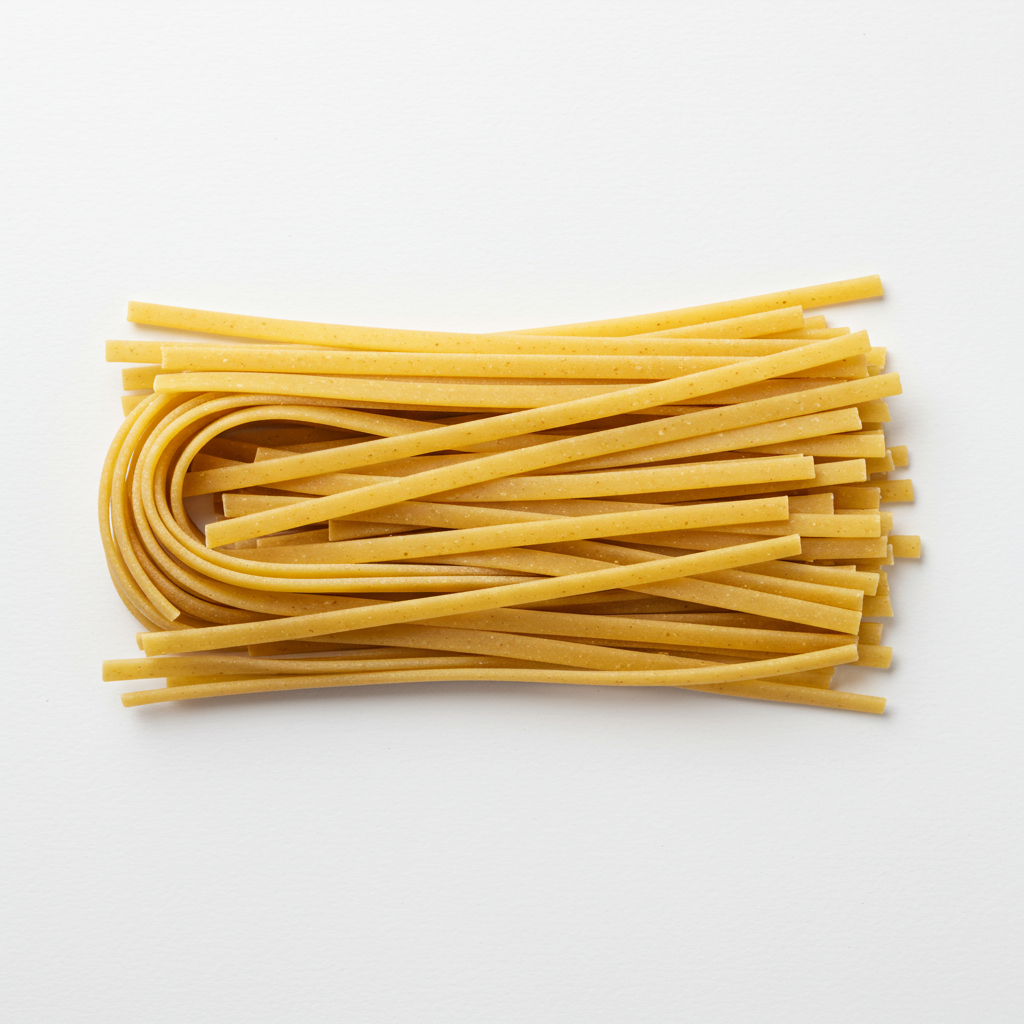
Chickpea Linguine Pasta
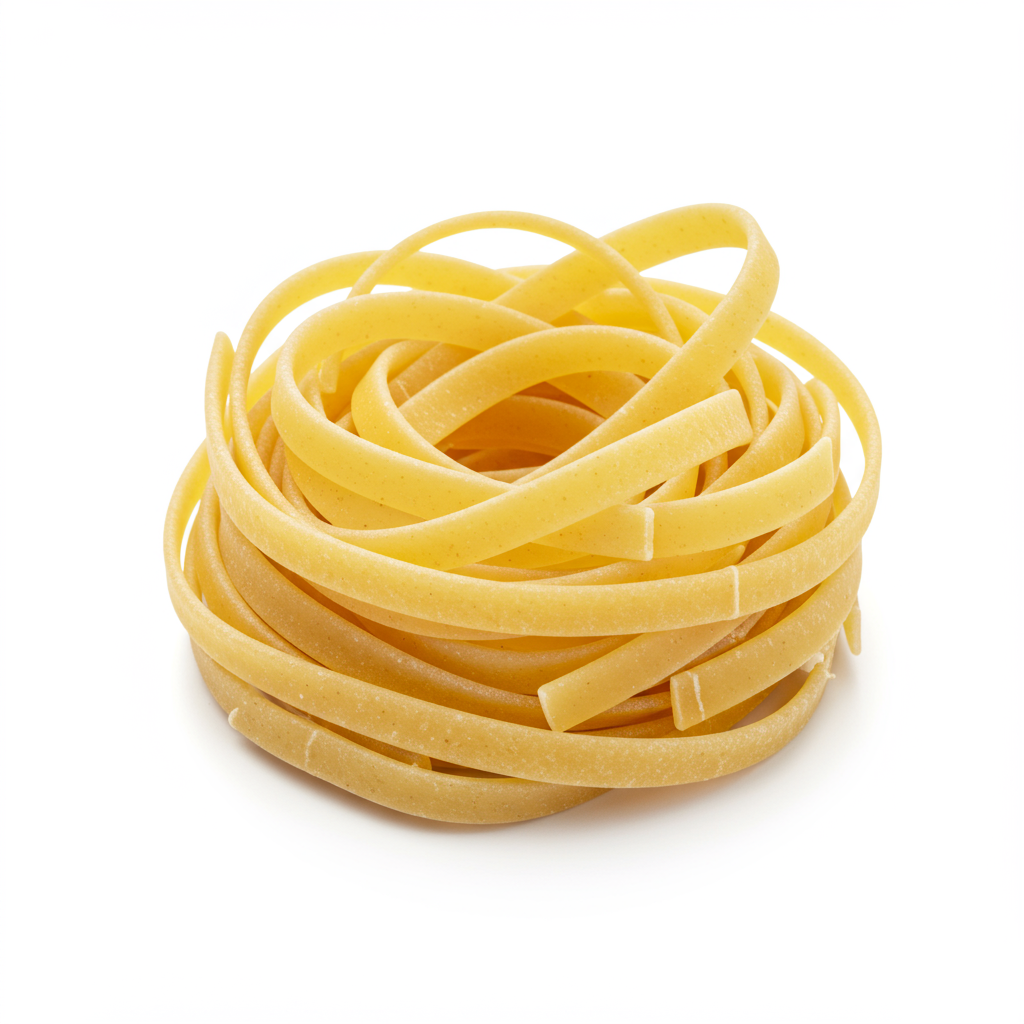
Gluten Free Fettuccine Pasta

Tagliatelle Pasta

Fettuccine Pasta

Pappardelle

Whole Grain Linguine

Lentil Spaghetti
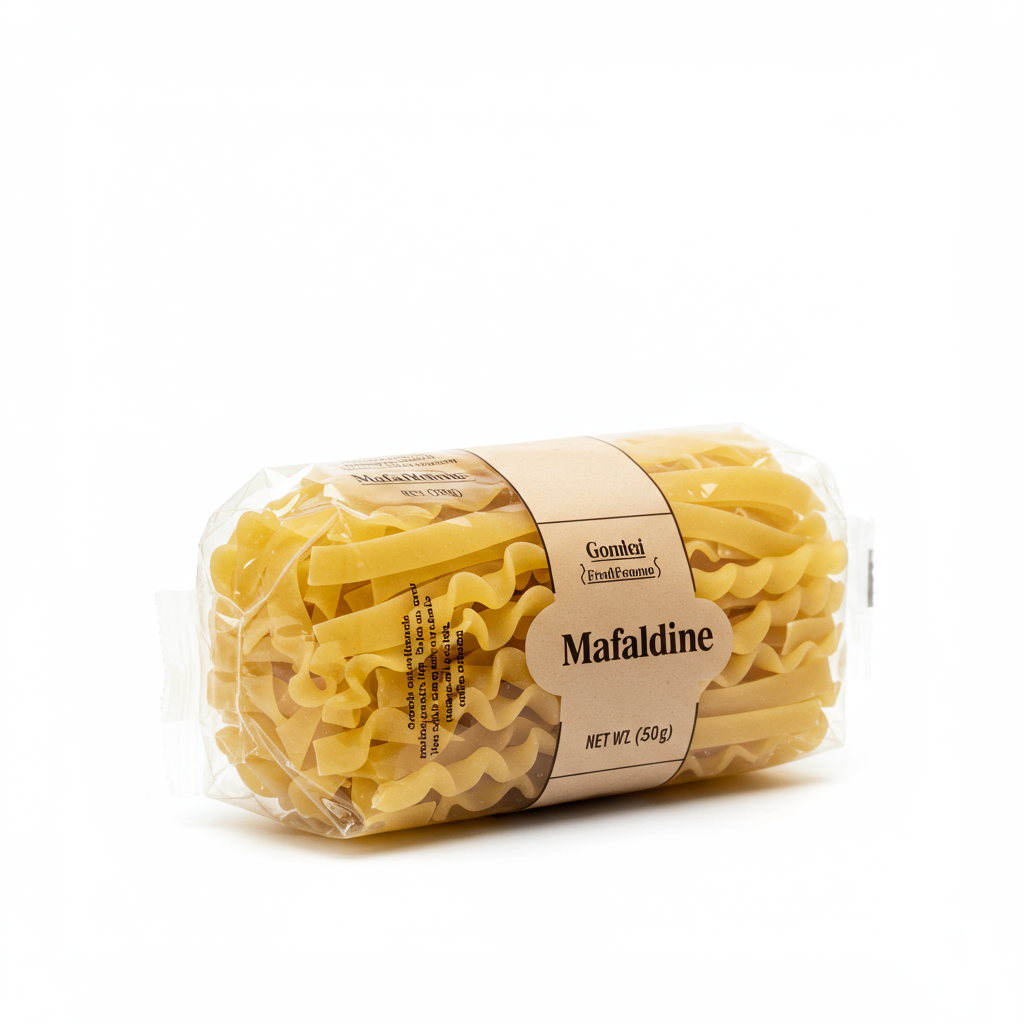
Mafaldine Pasta
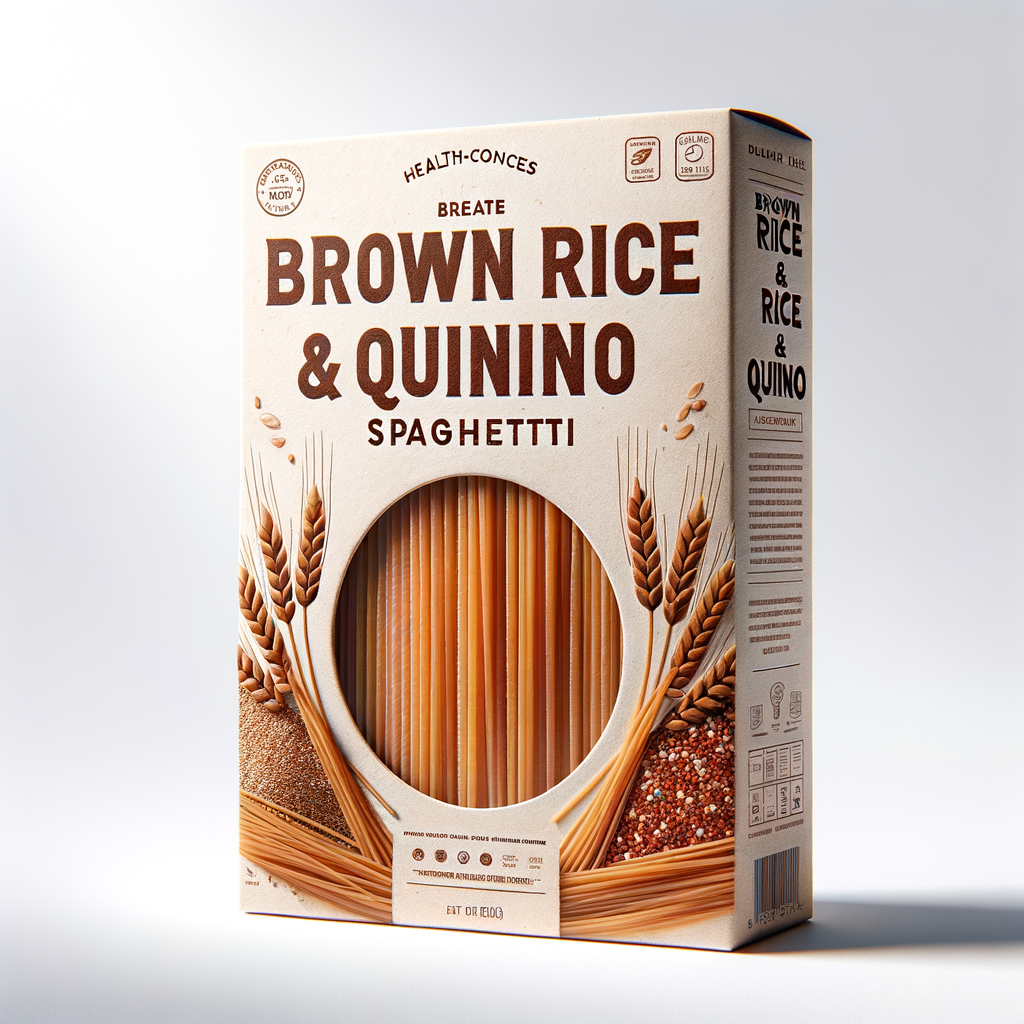
Rice & Quinoa Spaghetti

Spaghetti
See All
Health Info
Macros
146g
CARBS
3g
FAT
25g
PROTEIN
Allowed on these diets
LOW FAT
HIGH CALCIUM
VEGETARIAN
VEGAN
LACTOSE FREE
Contains these allergens
WHEAT

